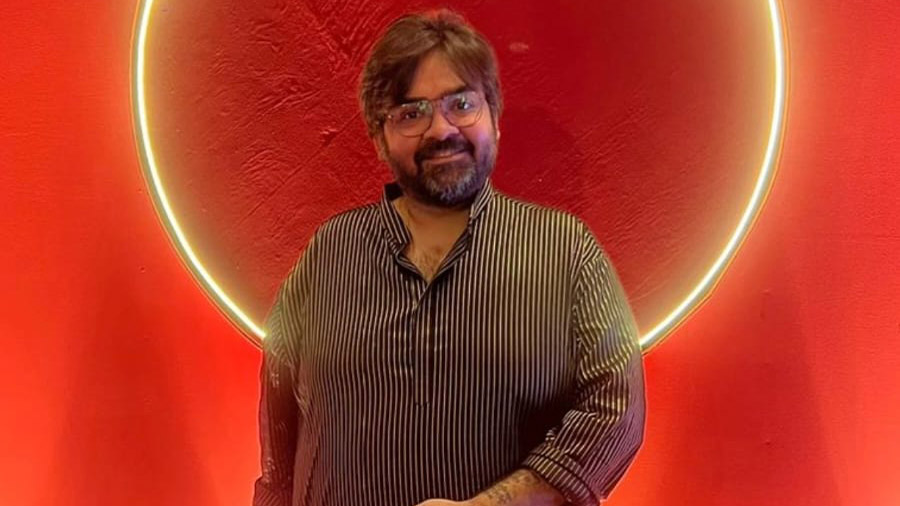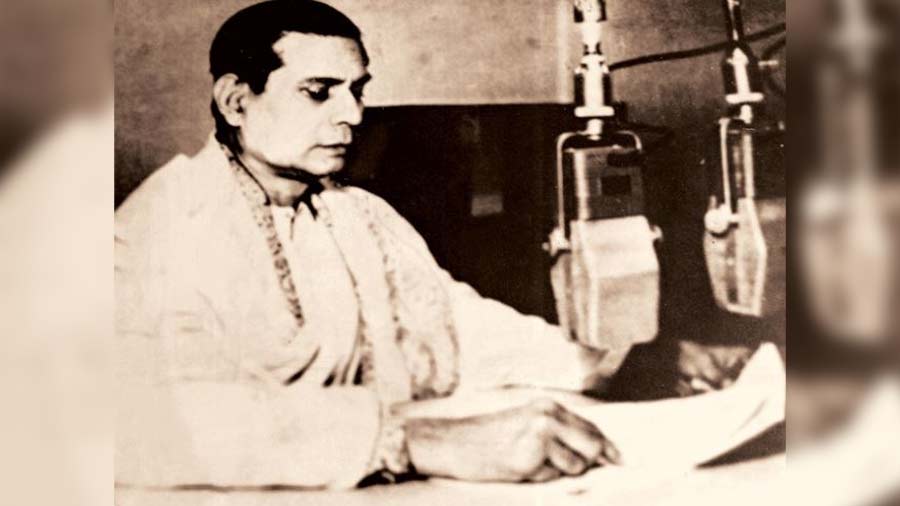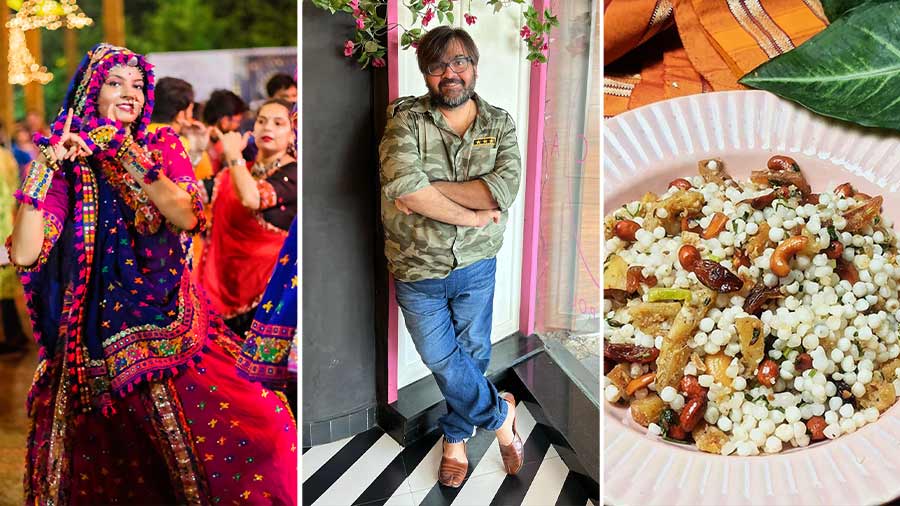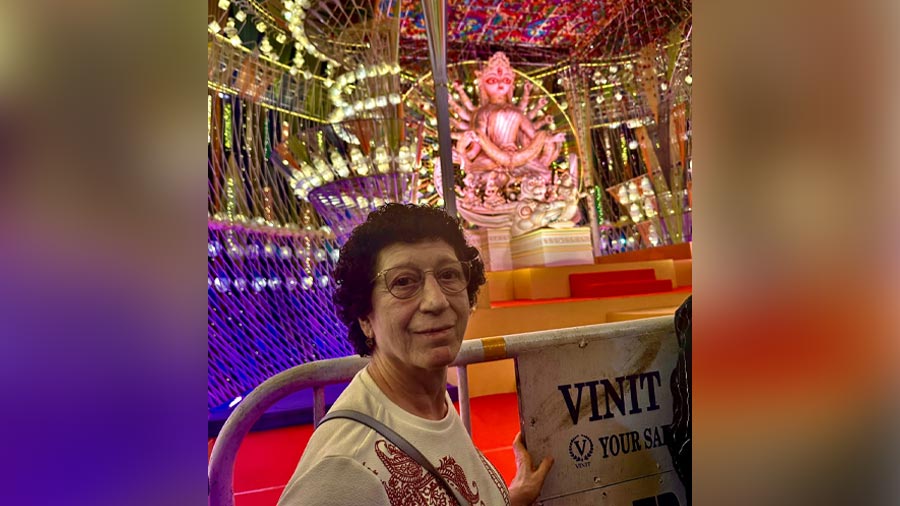Born and raised in Kolkata, Rahul Arora and his Punjabi parents maintained a happy balance between celebrating Durga Puja and following Navratri rituals. While the family observes Navratri fast, they also take part in the cultural activities of Durga Puja. My Kolkata hears stories about the Kolkata restaurateur’s childhood memories and nostalgia of Durga Puja.
“My childhood was spent in the narrow lanes of Hazra, where the parar pujo brought together people from the locality, who took part in various cultural programmes and puja rituals together. Although a Punjabi, my mother was a Rabindrasangeet singer and she participated in the programmes that were held during pujo. So, right before the festival, our house would be packed with artistes rehearsing. On the day of the programme, she would wear a laal-paar sada sari and go up on stage,” remembers Rahul.
Listening to Mahishasurmardini on the radio was a ritual on Mahalaya mornings, which was introduced and encouraged by his parents. Durga Puja, in those days, was devoid of the fancy things and celebrations were all about togetherness, feels Rahul. Finding joy in apple-shaped balloons, cap pistols and playing with para friends were the childhood highlights. “For us, new clothes did not mean a big thing back then. We found your joy in cap guns and playing together. All the children had a holiday, and we just enjoyed being in the pandal all day.”
The Hazra kid soon moved to Salt Lake and found that the para feeling was missing, even during pujo. But his parents made it a point that they experienced the Durga Puja vibe. “On Sashthi, my father would take us to see pandals. We would see Mohammad Ali Park, Kumartuli etc. and they used to be empty. The theme pujo was not there in our childhood. Another fond memory I recall is during the wee hours, we would take a boat ride from old Babughat and watch the sunrise. Since we don’t eat non-vegetarian food during Navratri, we would buy cut fruits and chana makha, and buy tea in paper cups and enjoy the sunset. That was the main highlight of the pujos.”
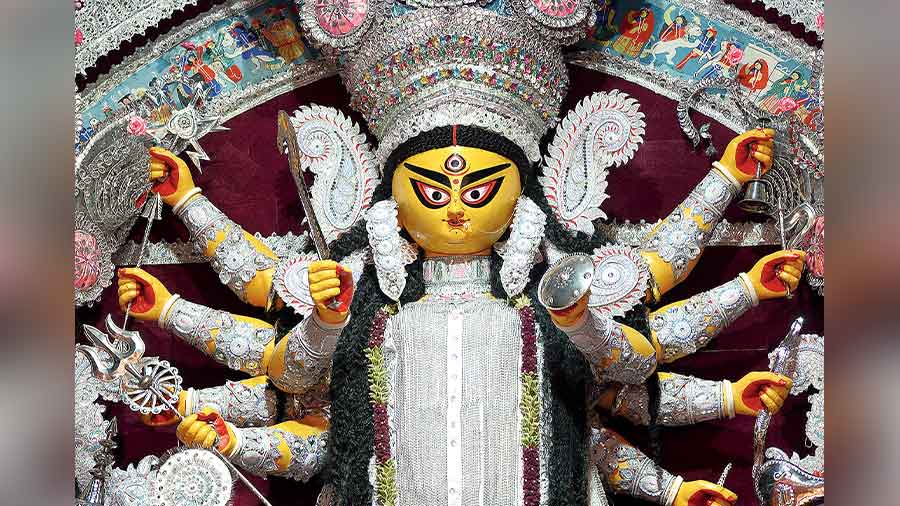
The traditional idol of the Bagbazar Sarbojanin puja – a favourite of Rahul’s
A big fan of Bagbazar Sarbojanin and Maddox Square, Rahul Arora makes it a point to visit the pandals at least once or twice before and during the Pujo. “I love Bagbazar Sarbojanin for two things, first is of course their pandal’s chandelier and the traditional Durga idol. The second reason is for their mela, from where I buy my churan-chatpata stash from the Jaino Shilpo Mandir stall.”
As an adult, Durga Puja has become a quiet affair for Rahul and he prefers to spend time with family and friends. “I try to spend time with my family and friends without having much to do or going out. Eating out till Navami is not an option since I am on a fast. I usually go out at Navami. Pre-COVID, I used to remain outside, and after nine days of eating vegetarian, I would go to Tiretta Bazar to have breakfast,” he said.
Another ritual that the foodie follows is picking mutton momos from Blue Poppy on Navami night. “I eat non-vegetarian food after Navratri. So on Navratri I would call Doma di (Doma Wang, owner, The Blue Poppy Thakali) and ask for mutton momos. Since Blue Poppy is closed on Dashami, I would pick them up on Navami night.”
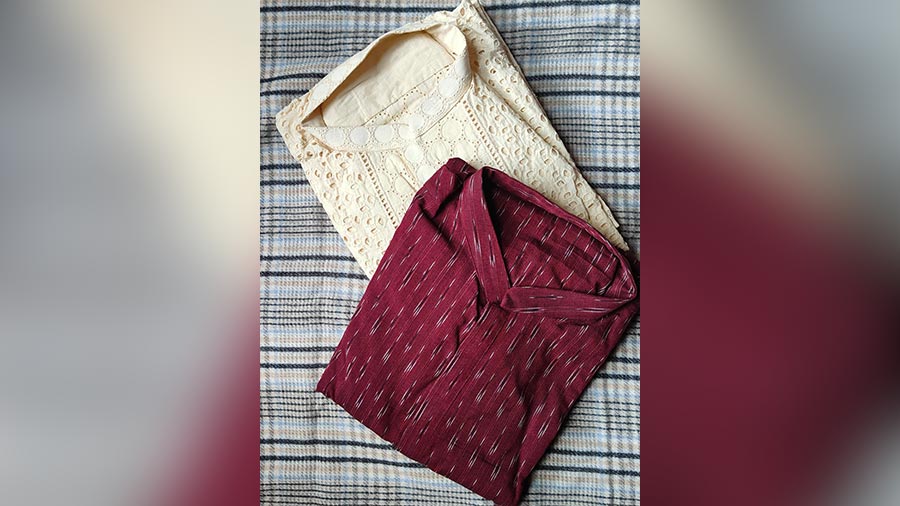
Rahul’s kurta haul for the pujas
Pujo fashion also evolved as Rahul grew up. He grew a fondness for kurtas and ethnic shoes. “My father had his shop in Ezra Street, so I have grown up wearing kurtas from the shop around the Nakhoda Masjid area. They have these beautiful kurtas, sherwanis and Jalsa Jutis. I got my first sherwani stitched from Salim Sherwaniwala, who made it wonderfully and I still have it. The traditional moti work on kurtas are also something you would find here. You also get wonderful tailors who make customised kurtas. I still get my kurtas stitched from there. This year, too, I have had a couple of kurtas made for myself that I plan to wear. I absolutely love dressing up during pujas.”
